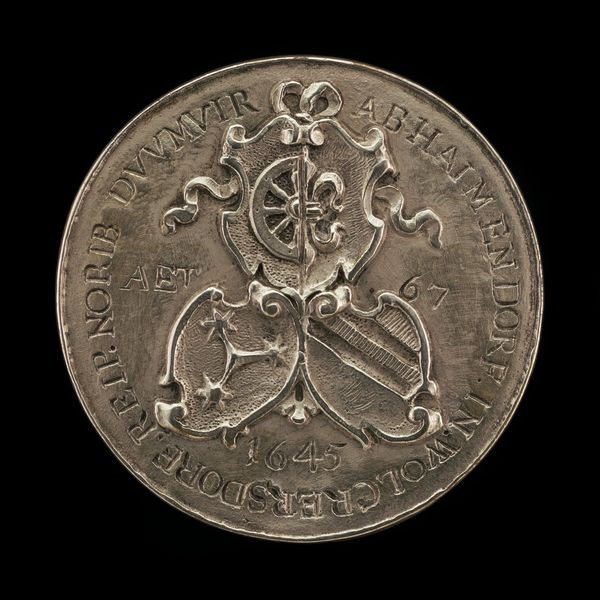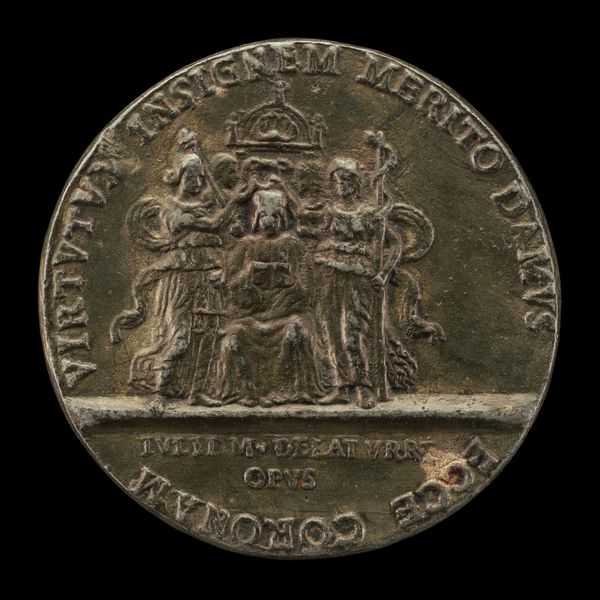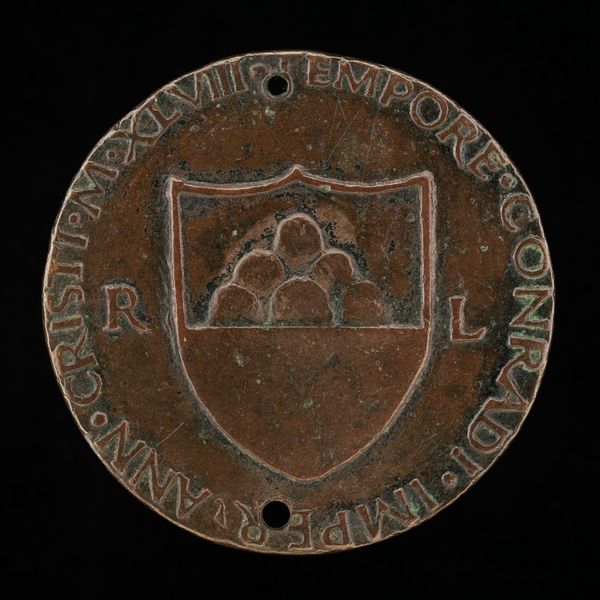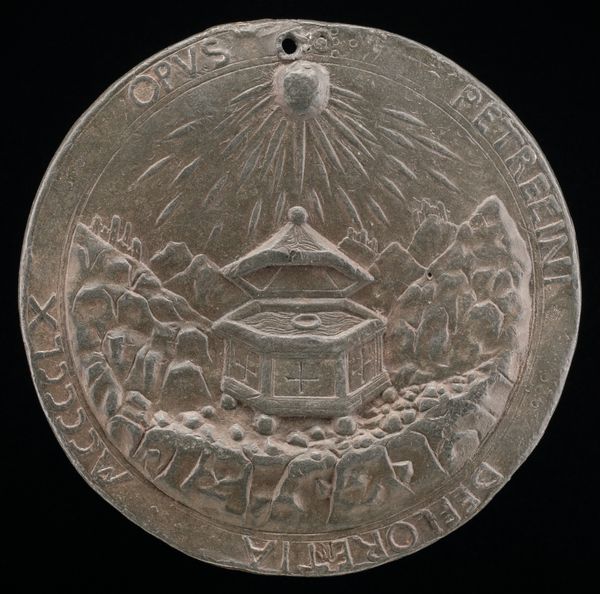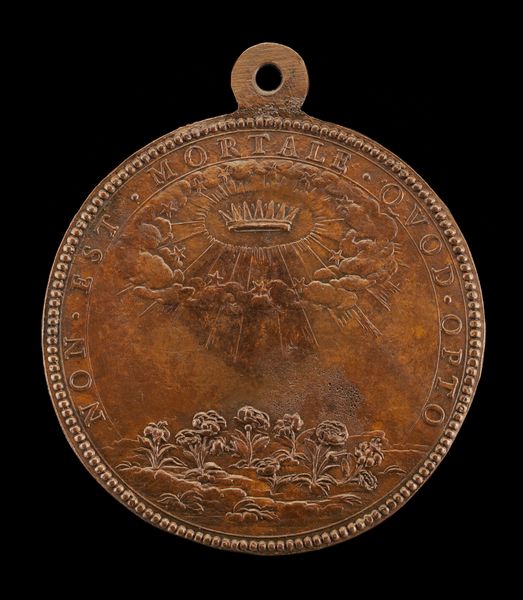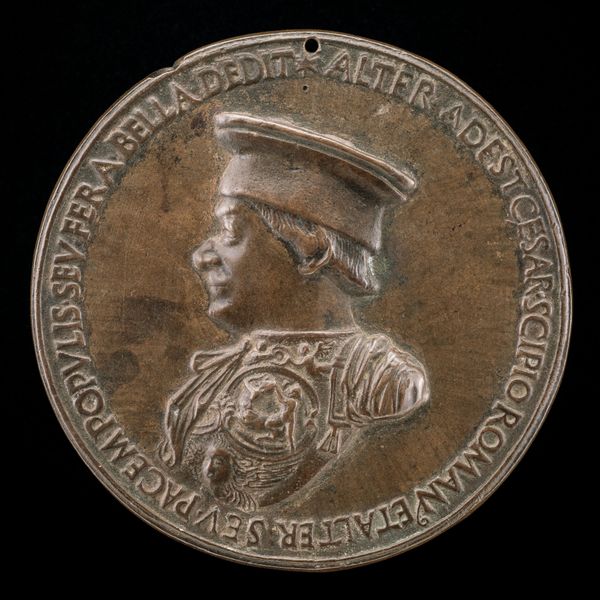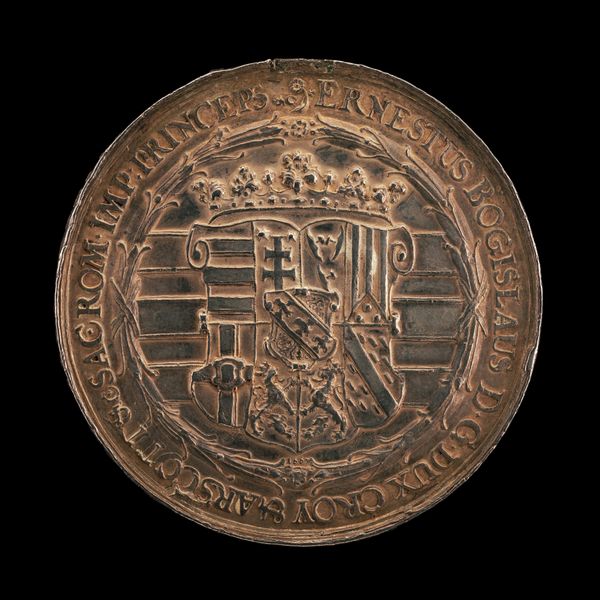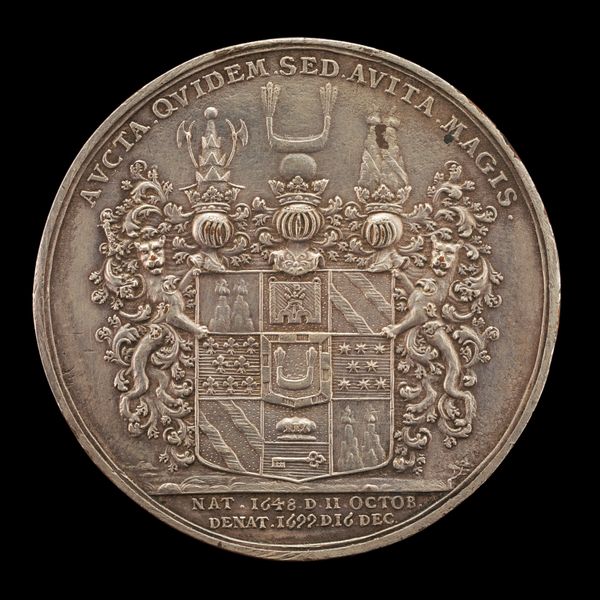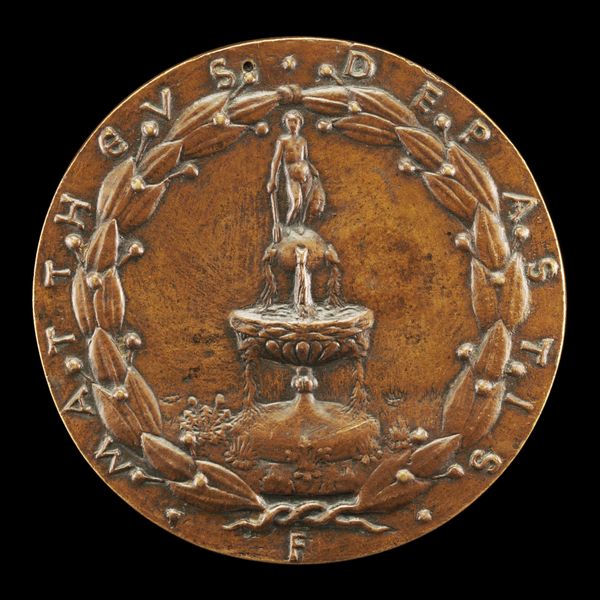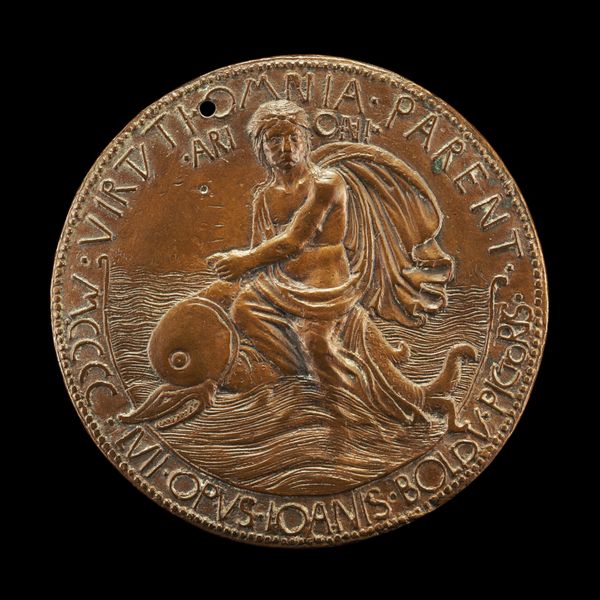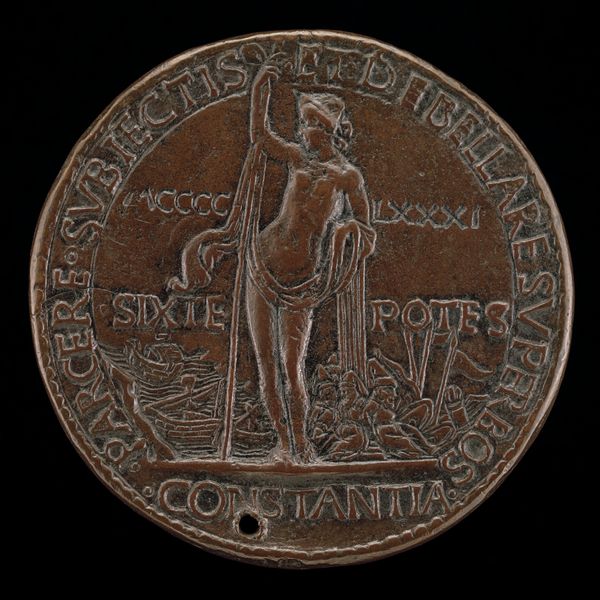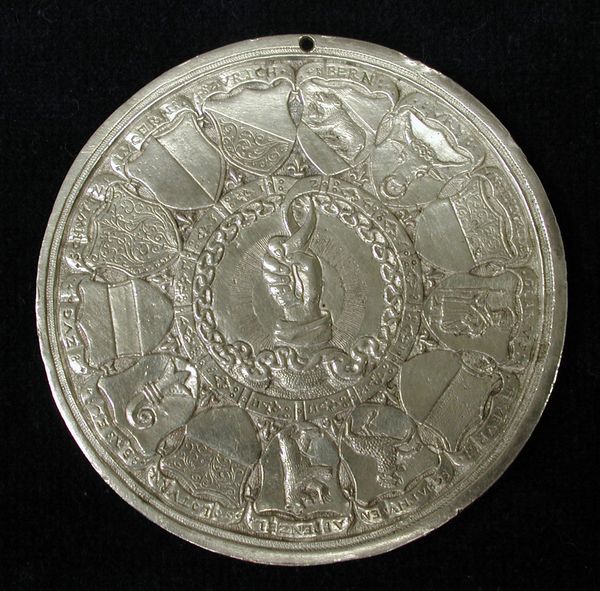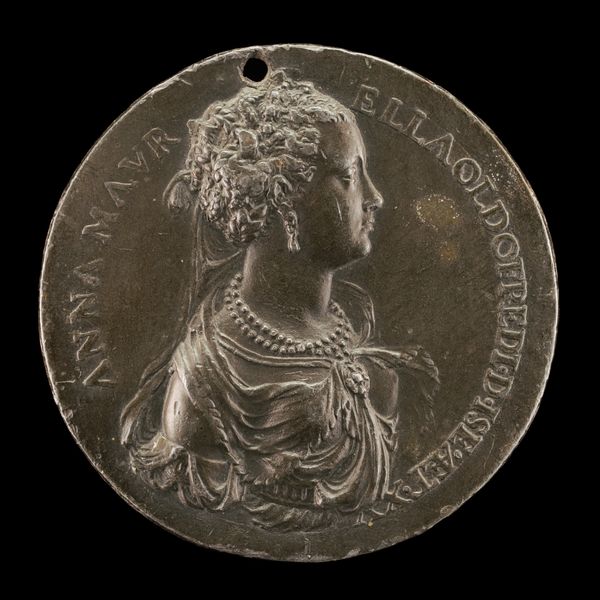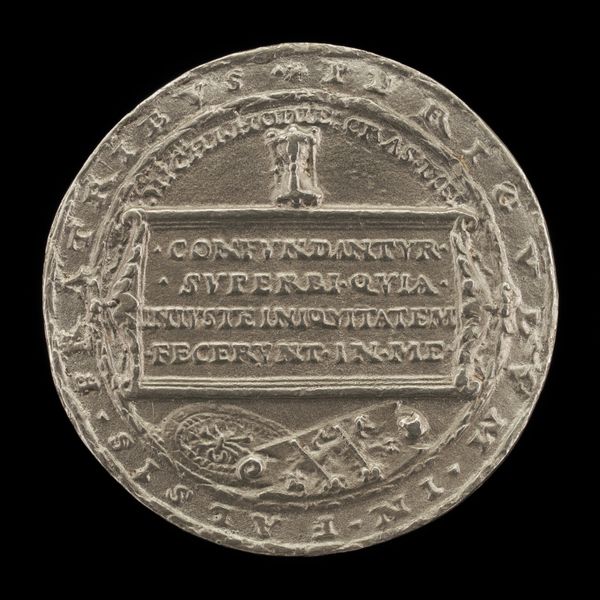![Three Crowns: Constantinople, Iconium, and Trebizond [reverse] by Gentile Bellini](/_next/image?url=https%3A%2F%2Fd2w8kbdekdi1gv.cloudfront.net%2FeyJidWNrZXQiOiAiYXJ0ZXJhLWltYWdlcy1idWNrZXQiLCAia2V5IjogImFydHdvcmtzLzk2Y2EzZjRhLThiMDMtNDJjZC1hYjBkLThiMWNiMGRjNTU3MC85NmNhM2Y0YS04YjAzLTQyY2QtYWIwZC04YjFjYjBkYzU1NzBfZnVsbC5qcGciLCAiZWRpdHMiOiB7InJlc2l6ZSI6IHsid2lkdGgiOiAxOTIwLCAiaGVpZ2h0IjogMTkyMCwgImZpdCI6ICJpbnNpZGUifX19&w=3840&q=75)
Three Crowns: Constantinople, Iconium, and Trebizond [reverse] c. 1480
0:00
0:00
relief, bronze, sculpture
#
portrait
#
medal
#
sculpture
#
relief
#
bronze
#
11_renaissance
#
sculpture
#
italian-renaissance
Dimensions: overall (diameter): 9.38 cm (3 11/16 in.) gross weight: 174.59 gr (0.385 lb.) axis: 12:00
Copyright: National Gallery of Art: CC0 1.0
Editor: Here we have "Three Crowns: Constantinople, Iconium, and Trebizond," a bronze relief medal by Gentile Bellini, circa 1480. It has a kind of worn, ancient feel to it, and the three crowns are strikingly simple. What stands out to you in this piece? Curator: What I see is a potent symbol of ambition and fragility during a period of intense geopolitical struggle. Bellini, a Venetian artist, created this medal when Venice was heavily involved in Mediterranean politics. The three crowns are said to represent Constantinople, Iconium, and Trebizond, former seats of power now under Ottoman control. Editor: So it's not just a pretty picture, but a political statement? Curator: Absolutely. Consider the context. Constantinople had fallen just decades before. This medal could be interpreted as a lament for lost territories and a rallying cry for reclaiming them. It is important to consider what the crowns mean, they all belonged to leaders removed from power. This artwork highlights how unstable identity, gender, race and politics could be. Editor: That shifts my perspective completely. I was just seeing it as a historical artifact, but it’s more of a commentary on power dynamics. Curator: Precisely. Bellini is engaging in a visual discourse about shifting empires and Venetian aspirations. Who held and commissioned such art holds power of expression. Editor: It makes you wonder about the intended audience and what conversations it sparked back then. Curator: Indeed. And how these conversations echo across centuries. This object allows us to reflect on past dominations, while offering ways for considering contemporary political struggles. Editor: I'll definitely be looking at art with a more critical, contextual eye from now on! Thanks for expanding my understanding. Curator: My pleasure. I’m always glad when art encourages engagement and discussion, as opposed to passive appreciation.
Comments
No comments
Be the first to comment and join the conversation on the ultimate creative platform.
